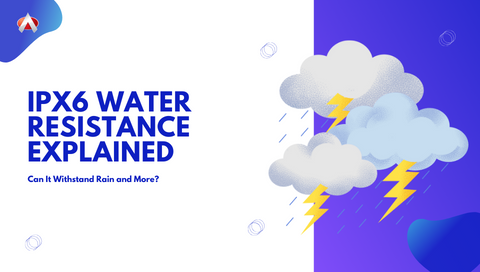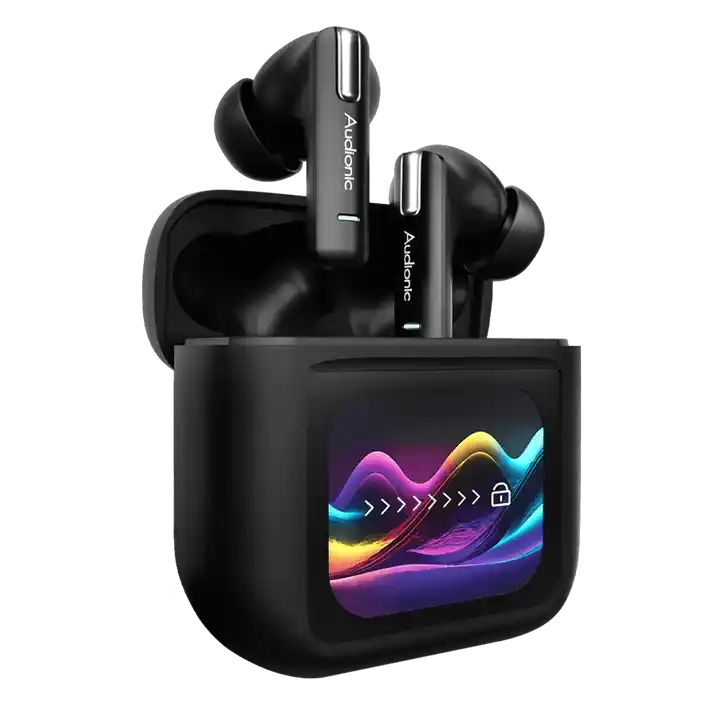
IPX6 Water Resistance Explained: Can It Withstand Rain and More?
IPX6 is a rating commonly used to describe the water resistance of electronic devices, particularly outdoor and rugged equipment. This rating provides information about the device's ability to withstand exposure to water and is part of the Ingress Protection (IP) rating system.
IPX6 is a part of the IP rating system, which is an internationally recognized standard for classifying the protection levels of electrical enclosures against the intrusion of solid particles (like dust) and liquids (like water). The "6" in IPX6 signifies the device's water resistance level.
IPX6-rated devices are designed to be highly water-resistant. Specifically, they are capable of withstanding powerful water jets from any direction without experiencing harmful effects.
Activities and scenarios where IPX6-rated devices can be used effectively include: IPX6-rated equipment is ideal for outdoor enthusiasts who need electronics that can withstand heavy rain, water splashes, or even powerful hose-downs.
These devices are suitable for use on boats, as they can handle exposure to water spray and waves without getting damaged. IPX6-rated devices are commonly used in industrial settings where they might come into contact with high-pressure water jets during cleaning processes or construction activities.
If you're camping or hiking in wet and rainy conditions, IPX6-rated gear can endure the elements. It's important to note that while IPX6 devices can handle powerful water jets, they are not designed for full immersion in water or prolonged submersion. The IPX6 rating indicates strong water resistance, but it does not guarantee the device's ability to function underwater.
Is IPX6-rated water resistant?
Yes, IPX6 is a rating that indicates a device's water resistance. Devices with an IPX6 rating are considered water-resistant. Specifically, they can withstand powerful water jets from any direction without experiencing harmful effects.
While IPX6-rated devices are not designed for full immersion in water, they are suitable for use in heavy rain, water splashes, and situations where they might be exposed to high-pressure water jets. Making them water-resistant for most practical purposes.
What IPX rating is suitable for heavy rain?
The appropriate IPX rating for heavy rain depends on the intensity and duration of the rain, as well as the specific device you want to protect. Generally, an IPX4 rating or higher is considered suitable for heavy rain.
IPX4
Devices with this rating are splash-resistant and can handle light to moderate rain without issues. They are suitable for most everyday outdoor activities in rainy conditions.
IPX5
Devices rated IPX5 can withstand water jets, making them even more resilient against heavy rain. They are suitable for use in heavier rain conditions.
IPX6
IPX6-rated devices can handle powerful water jets from any direction, making them highly resistant to heavy rain. They should perform well even in torrential downpours.
IPX7 and IPX8
These ratings indicate that a device can be submerged in water at varying depths for a specified duration. They are well-suited for heavy rain, as well as activities like swimming and diving.
Can IP67 withstand heavy rain?
Yes, IP67-rated devices can withstand heavy rain. The "IP67" rating indicates that a device is both dustproof (6) and waterproof (7). It can handle immersion in water up to 1 meter (about 3.3 feet) deep for a duration of up to 30 minutes.
This level of water resistance makes IP67-rated devices suitable for use in heavy rain without suffering damage. However, it's essential to remember that this rating does not mean they are suitable for swimming or prolonged submersion.
Can I Swim With IPX6 Earbuds?
While IPX6-rated earbuds are highly water-resistant and can handle powerful water jets, they may not be suitable for swimming.
Swimming involves prolonged submersion in water, and most electronic devices, including wireless earbuds, are not designed for extended exposure to water.
Prolonged submersion can still lead to water ingress and damage.
If you want earbuds specifically for swimming, it's advisable to look for devices with higher water resistance ratings, such as IPX7 or IPX8, which are designed to handle full immersion in water and are better suited for aquatic activities.
Always consult the manufacturer's guidelines and user manual to understand the recommended usage and limitations of your specific earbuds.
Let’s Conclude
You can perform various activities while wearing an IPX6-rated device, as it offers a high level of water resistance. Here are some activities where you can use an IPX6-rated device:
Outdoor Adventures in heavy rain, running and jogging in wet weather, water sports on the surface, gardening and yard work, beach lounging, car washing, camping in wet conditions, high-intensity workouts, construction, and outdoor jobs. Remember that while IPX6-rated devices are water-resistant, they are not designed for full immersion in water or extended submersion.
However, IPX6 is not suitable for people who enjoy underwater activities. IPX6-rated devices are designed to withstand powerful water jets and heavy rain but are not intended for full immersion in water or prolonged submersion.
If you're passionate about underwater activities such as swimming, snorkeling, diving, or any other water-based sports, you should look for devices with higher water resistance ratings such as IPX7 or IPX8. These higher-rated devices are specifically designed to handle submersion in water at greater depths and for longer durations, making them suitable for underwater activities.

















